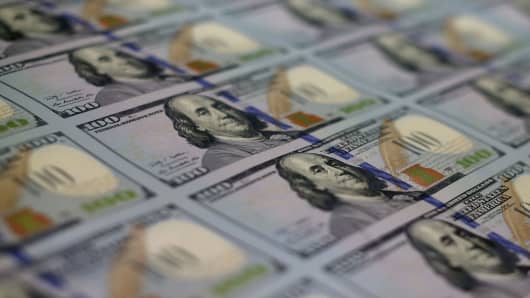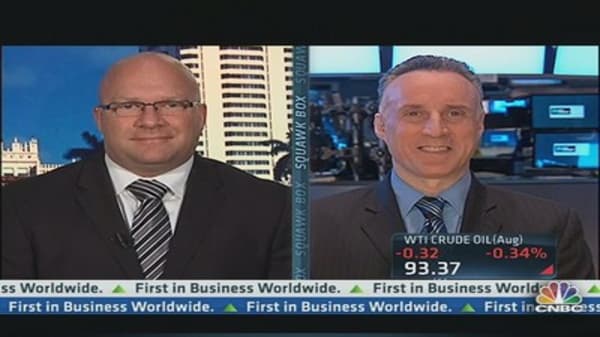The euro hit session highs on Monday, rallying from nearly three week lows, in tandem with U.S. stocks paring their losses and commodities gaining sharply.
The euro rose as high as $1.3143, recovering from lows of $1.3058, its weakest level since June 5. It was last at $1.31327, up 0.1 percent.
"We're seeing a stemming of the sell-off in risky assets and that has caused some mild profit-taking on the dollar," said Joe Manimbo, senior market analyst at Western Union Business Solutions in Washington.
Earlier, the U.S. dollar rallied to its highest in nearly three weeks against a basket of currencies on rising expectations U.S.monetary stimulus will be scaled back in the near term.
The shift in sentiment has prompted investors to unwind bets that the Federal Reserve was not ready to end its bond-buying program, known as quantitative easing. The unwinding, however, could take months.
Though the dollar was not up across all pairs on Monday, it has been since Fed Chairman Ben Bernanke said last Wednesday that the U.S. central bank could taper its monthly $85 billion in asset purchases if the economy continues to improve. U.S. bonds and stocks have sold off since the Fed announcement.
"The optimism by the Fed fell in sharp contrast to other prominent central banks, such as the Bank of Japan, Bank of England, European Central Bank, and Reserve Bank of Australia, which are seeking measures to thwart a further economic slowdown to their respective jurisdictions,"said Ravi Bharadwaj, market analyst at Western Union Business Solutions in Washington.
The dollar index was steady at 82.40, around its highest since June 5. The index rallied 2.2 percent last week, its biggest weekly rise since November 2011.
(Read More: Mark Mobius: China's Problems as Big as US Subprime)
Bernanke's comments have helped push up the benchmark 10-year U.S.Treasury note's yield to its highest in almost two years on Monday with interest rate differentials moving in favor of the dollar. U.S. 10-year yields were at 2.52 percent in afternoon trading.
The dollar shifted between gains and losses against the yen, but sold off in the New York session as investors considered that the recent five-day advance had gone too far, too fast. It had risen earlier against the Japanese currency after Bank of Japan Deputy Governor Kikuo Iwata said the central bank still has options for monetary easing, if need be.
In early afternoon trading, the dollar was down 0.2 percent at 97.68 yen, below an earlier peak of 98.70, its highest since June 11.




